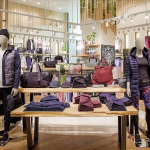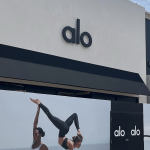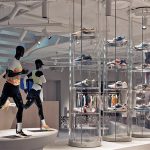The apparent softening of the tension between reluctant lovers Nike and Foot Locker has analysts swooning with excitement over the prospect that the industry will go back to the way it used to be. But some of the over-anxious press reports and love-struck analyst opinions are not unlike the exasperation coming from network NFL analysts that yearn for the days of yore rather than the newfound parity in the league.
The market seems to like the idea of dominant players in the industry much like the television prognosticators that were looking for last years playoff contenders to run roughshod over the league. Like the NFL, which has teams like Carolina, Kansas City, Seattle and Dallas leading the league this year, the athletic footwear industry has found new parity with both brands and retailers as a result of the year-old Nike/Foot Locker spat.
Until the two started their dispute, Nike was clearly going to get the lions share of open-to-buy at most athletic footwear and sporting goods — retailers. They still command that dominant position, but the window of opportunity that brands like K-Swiss and Reebok seized — and delivered on — at Foot Locker gave both brands newfound strength in the broader market.
Likewise with Finish Line, the retailer that has clearly benefited the most since the spat began. FINL utilized its new position with Nike launch product to carve out a new niche for itself as the leading fashion - and marquee product — footwear retailer in the mall. They used that momentum to drive sales of other brands like Reebok, K-Swiss and adidas out the door as well. Footaction has also seen benefit at its stores, although to a lesser extent.
The idea of parity is long overdue in an industry that has been so dominated by the two big guys for the past decade and a half, and it looks to be a good thing for the players that were able to take advantage of the opportunity.
Other retailers were shut out of multiple opportunities when it came to Nike in the past, as Foot Locker leveraged their size to secure early releases and a ton of exclusives. Other brands were stymied at Foot Locker and other retailers as Nike in many cases took a super-majority of the open-to-buy dollars, relegating others to a distant second- and third-tier status.
The other clear beneficiaries in this new parity are none other than Nike and Foot Locker themselves. Since the public tiff between the two super powers began in earnest last November, both companies have lost U.S. business, but have become much stronger in bottom line performance. Margins are improved for both, and the European business — which as a region was never affected by the dispute - is paying nice dividends for both companies.
The announcement this week by Nike in advance of Foot Lockers earnings release was seen by some as perfect timing to publicly declare the end of the twelve-month saga. But the shift in the business relationship - which has been over-simplified by some — should be analyzed in more depth.
Nike has not announced that all is well on the front and that they plan to go back to “business as usual”. Foot Locker has made it clear that they will stand by the brands notably Reebok and K-Swiss that stepped up and performed when they had a major hole in the business.
The term used by both parties is “select” locations, which Nike expects to be supported by a strong brand presence campaign in-store. Foot Locker, for their part, will get some of the product they need to maintain a high level of relevance in the malls that matter most for both companies. Some analysts are estimating that the program could reach as many as 400 doors, but some market watchers question the extent of marquee product that will be included. Both parties appear to be reluctant to mention Shox.
The caution here is for those prognosticators that want to declare winners and losers. The two companies will strike a deal — and a balance — that will help both to deliver increased top-line numbers along with their improved bottom-line health. There is no indication that any brands that have performed for Foot Locker will get tossed out due to the new partnership. Nor has Nike decided to pull back from any of the retailers that supported them when they needed a home for $400 million in open-to-buy dollars.
>>> The net-net is that this new parity in athletic footwear could get us growing again. And that makes everyone a winner…
Although sales in its U.S. “stores” unit remained sluggish in the third quarter, Foot Locker, Inc. knocked Wall Street analysts out of their socks as they reported earnings from continuing operations jumped 44% to 41 cents per share from 29 cents per share in Q3 LY. Analysts had a bit of egg on their faces as results surpassed the 34 cents consensus estimates by 20.6%.
FL shares were up 11.2% for the week to close at $20.93 on Friday.
The biggest surprise came in the gross margin line that jumped 200 basis points in the quarter. No doubt a more conservative approach to promotional activity played a part here as the worlds largest athletic specialty retailer focused on “product-specific” promotions rather than “all-store” programs. The other driver here is the increase in apparel sales which brings higher margins, particularly in Private Label, which FL said could 40% to 60% of the apparel business. Opportunity buys also undoubtedly played a part.
As previously reported in SEW_0345, FL saw net sales grow 3.3% on a currency-neutral basis, with the slight increase in comps driven by International and the “Dot Com” business. The U.S. “Locker” business, which includes Foot Locker, Lady Foot and Kids Foot, and the Champs business saw improving comps, but were still down in the “very low singles” for the quarter.
Key product categories in the quarter included Classics and brown sneakers, while apparel was said to be doing “very well”, driven by Licensed and Private Label. The Kids segment was said to be the strongest footwear category.
The “Dot Com” business, which includes the Eastbay and Footlocker.com direct businesses, was up in the “mid to high singles” on a comp basis and rose 8.3% to $91 million in sales and posted an operating profit gain of 63% to $13 million, or 14% of sales. FL announced last week a five-year extension to the $50 million catalog and on-line NFL business.
Europe again continues to deliver nice results, posting comp store sales gains in the “mid singles” for Q3 in a region that the company said has the highest sales per square foot.
Inventory, which was up 7.8% at the end of the quarter on a currency-neutral basis, was impacted by heavier inventories in Europe to support new store growth. The company also pointed to a “ramp-up” of its private label program that requires the retailer to front load deliveries for Holiday.
The biggest driver to the share price increase — and the rational analyst exuberance — has to be the rekindled relationship with Nike to “develop innovative retail presentations” of Nike and Brand Jordan statement and launch products at “select” Foot Locker, Inc. locations in the U.S., starting in Fall 2004.
The focus of the program would be on Nike Basketball, Training, Team Sports and Brand Jordan product lines.
“The improving relationship with Nike should also help comps next year,” Buckingham Research Group analyst Lee Backus said in a report.
Gary DeStefano, President of Nike USA, said the new relationship was based on Foot Locker's “commitment to an elevated level of retail presentation for performance product”.
As Foot Locker reported in the second quarter conference call, they will start receiving increased allocations of Nike product in current quarter under the exclusive “20 Pack” program that is expected to hit stores in mid-December with price-points in the $80 to $100 range. The retailer now sees Q4 company-wide comps increasing 2% to 5% in the quarter.
Foot Locker also indicated that they expect to once again beat analysts earnings estimates (at least they warned em this time) of 37 cents for Q4.
In other Foot Locker news, current president and CEO Matt Serra was elected to the Chairman of the Board effective February 1, 2004. He will replace J. Carter Bacot, who will remain a member of the Board and will be its lead director when Mr. Serra becomes chairman.
>>> We wonder if the moderation of the promotional activity is tied to Nikes decision to open the doors wider













